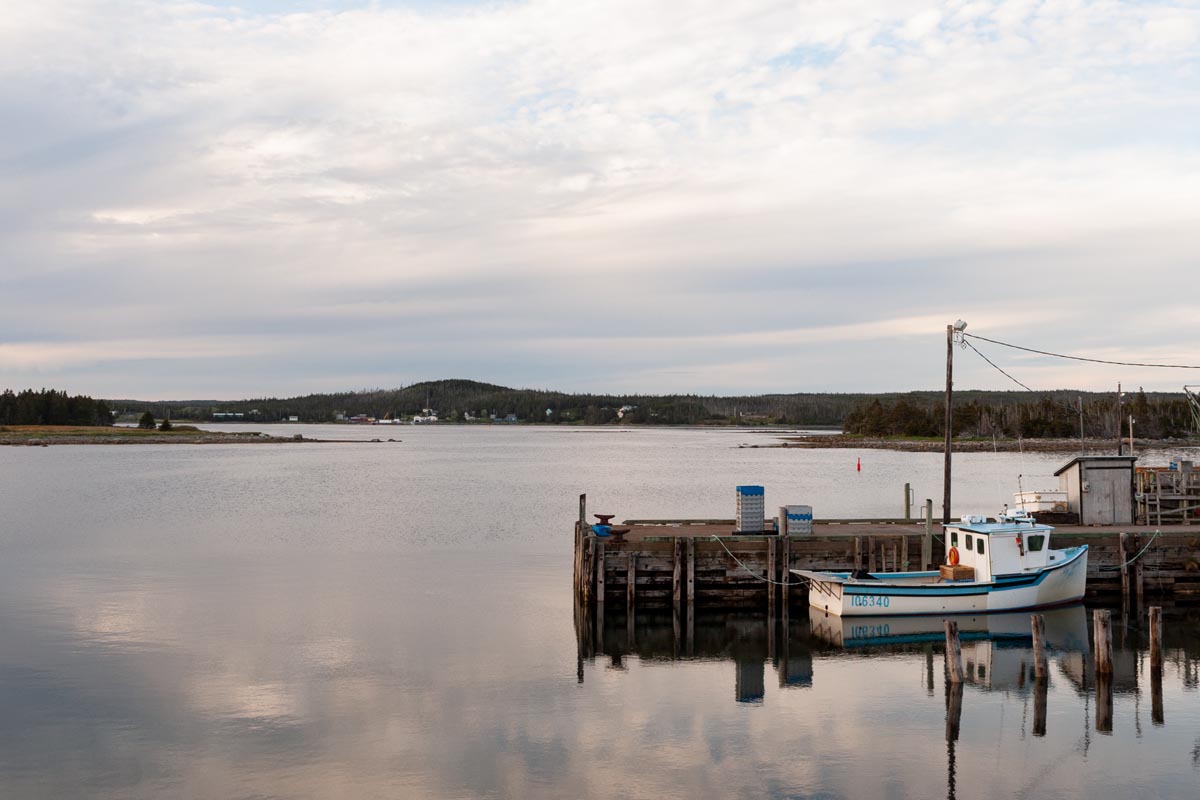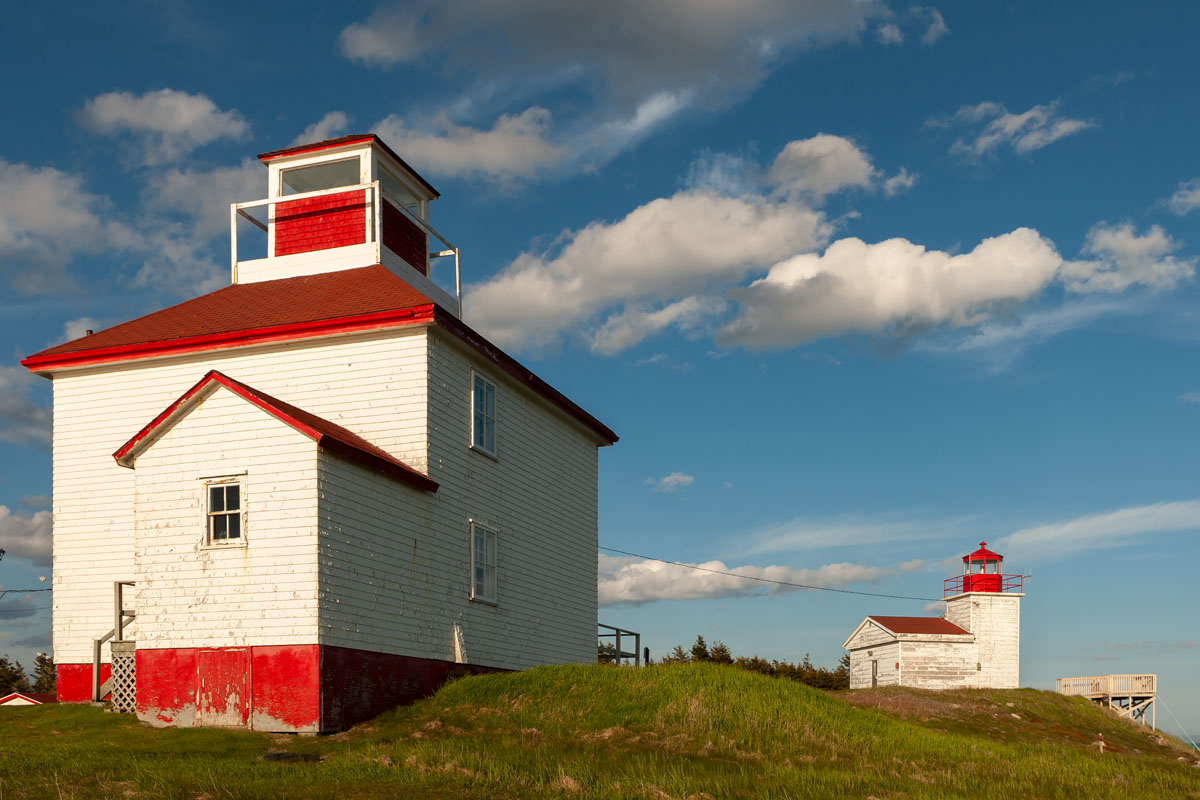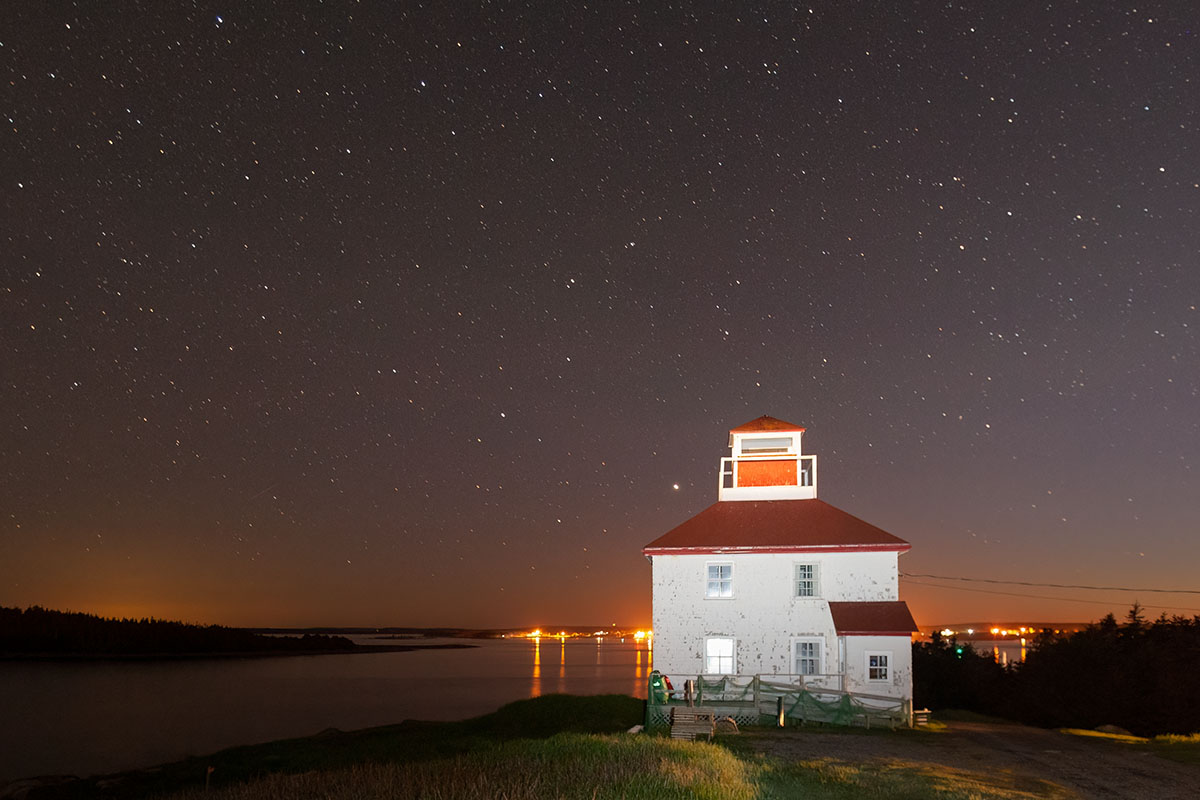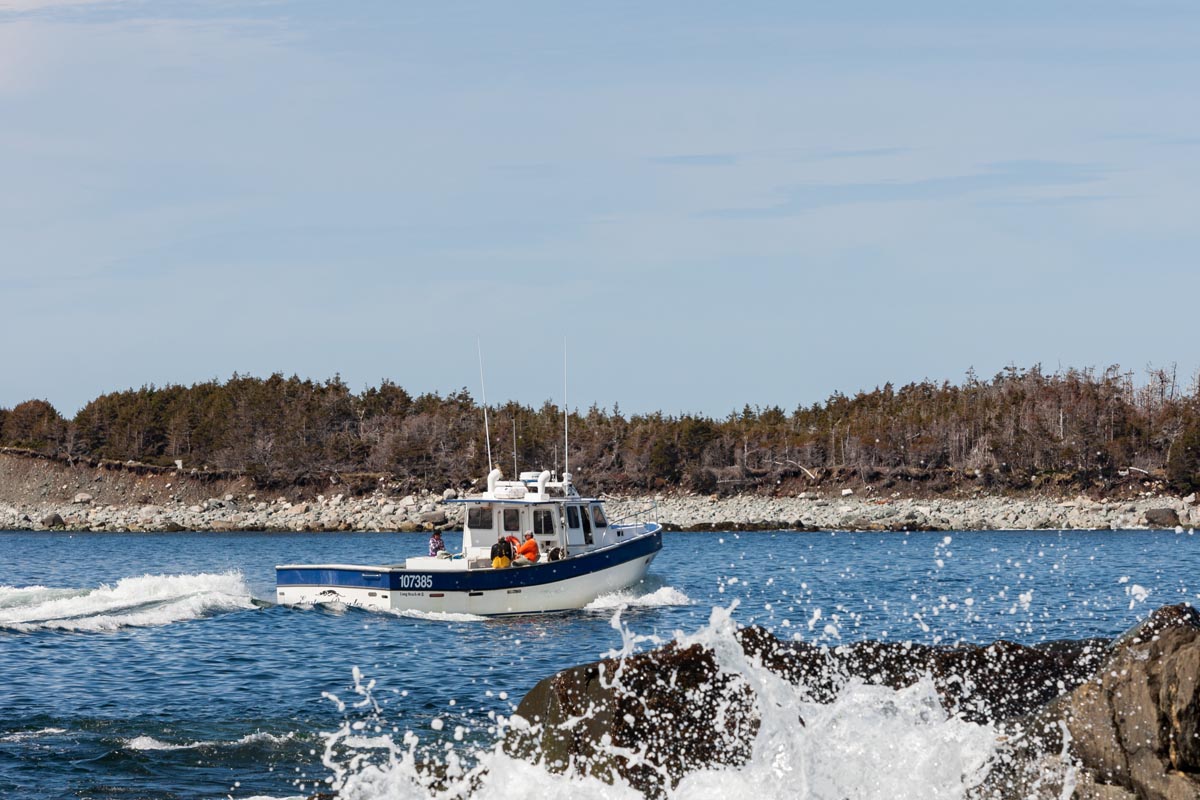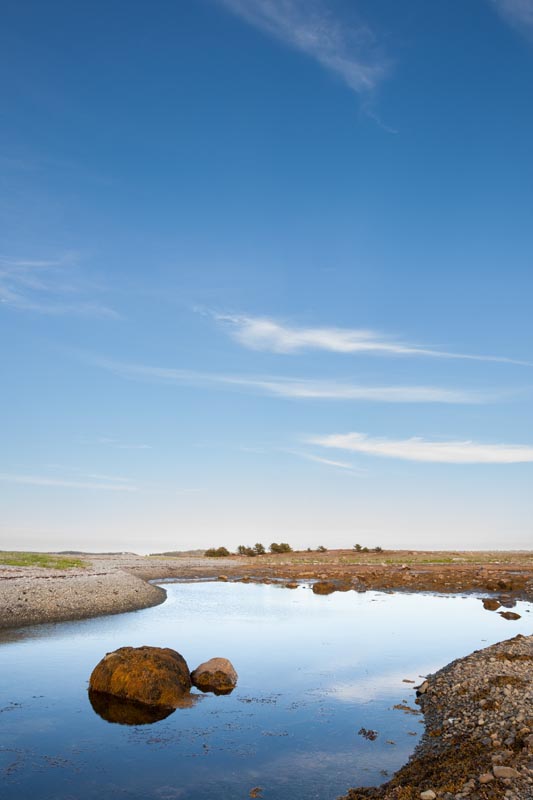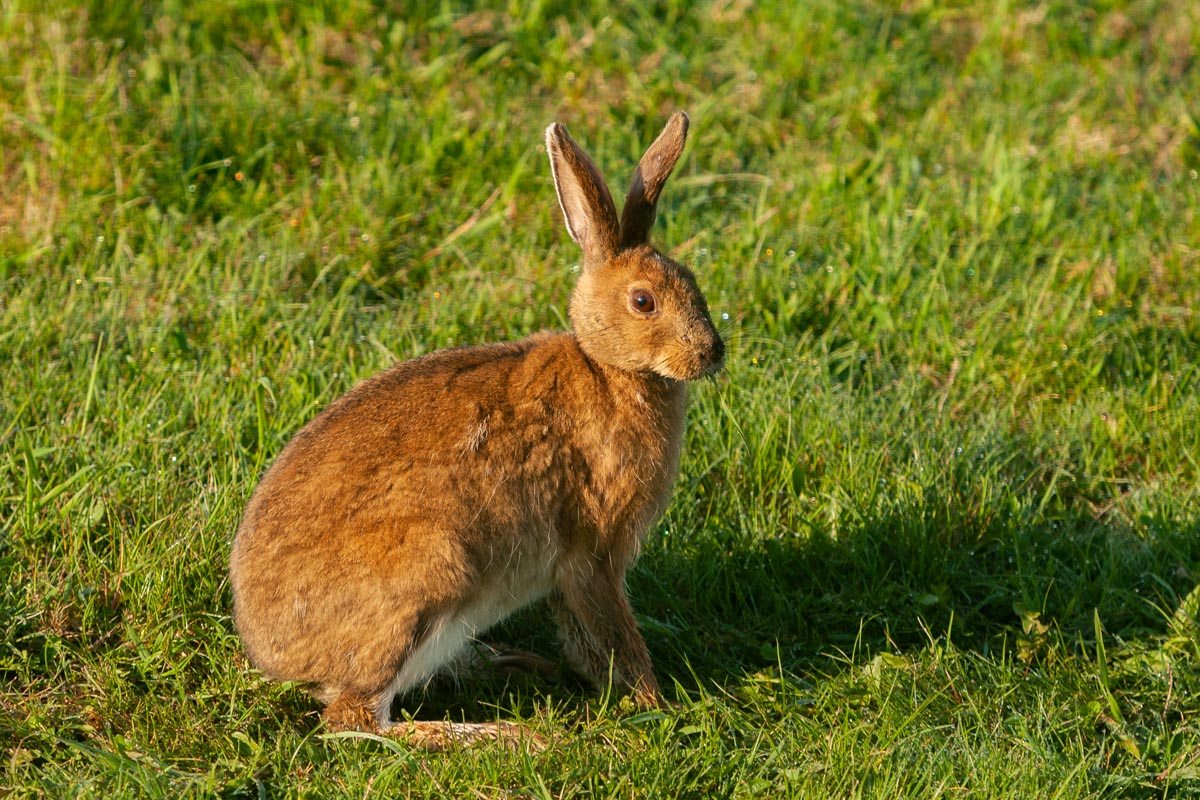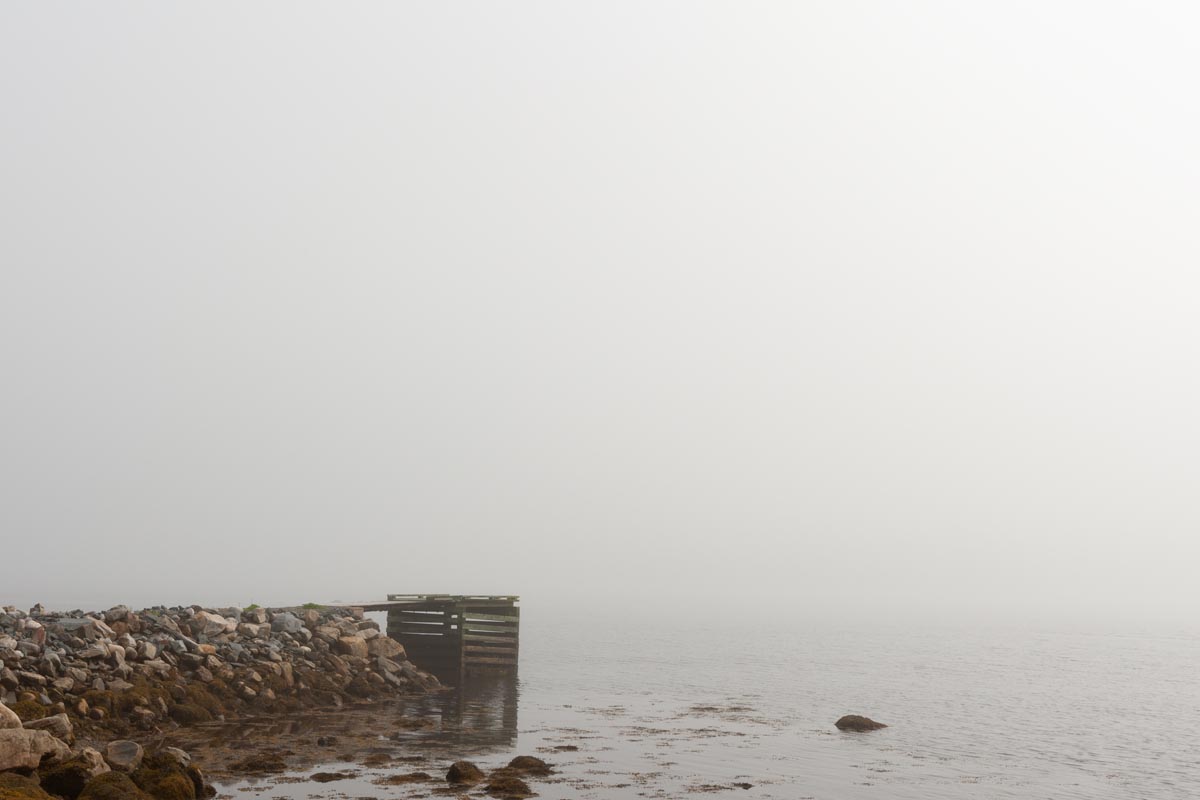Along the Forgotten Shore
I spent two weeks living in a renovated lighthouse keeper's cottage in the small fishing village of Port Bickerton, which is nestled on the Atlantic coast, in Guysborough County, Nova Scotia. It's part of the Eastern Shore but the locals sometimes refer to it as the "Forgotten Shore" since it's a little off the beaten path. Despite its small size, it has a rich history of fishing and seafaring and the local economy remains closely tied to the ocean. The people are warm, welcoming, industrious, and the very embodiment of Maritime hospitality. The area provides opportunities for landscape, documentary, and nature photography.
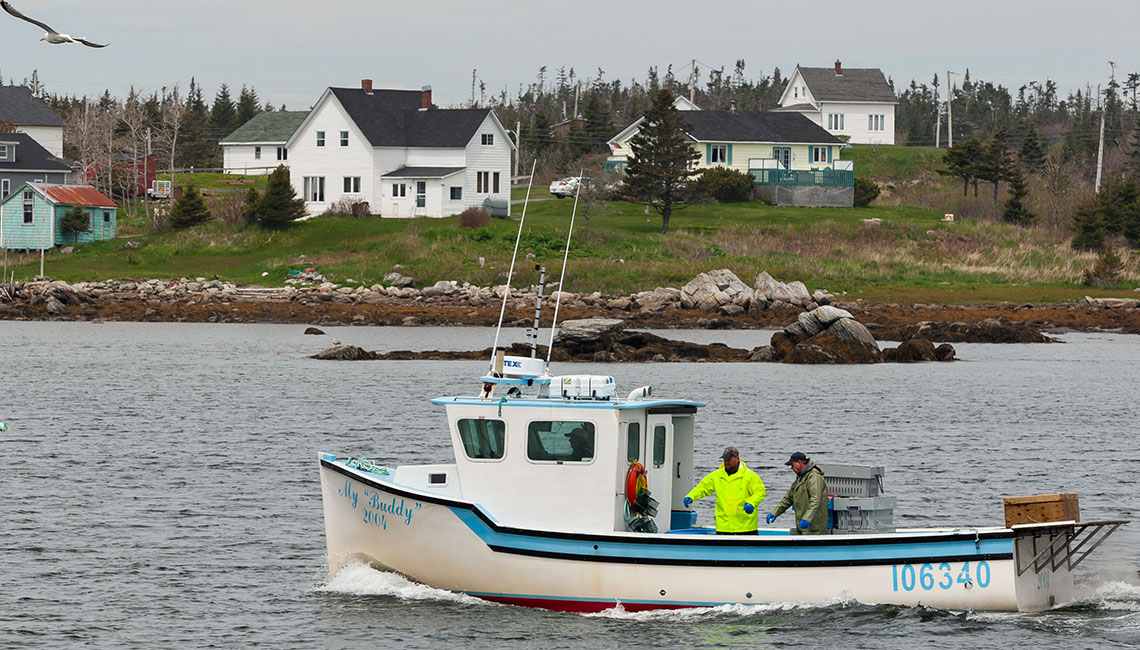
At the Lighthouse

The artist-in-residence gets to stay in a renovated lighthouse keeper's cottage. The cozy and comfortable space includes a kitchen, living room, and two bedrooms. It's fully stocked with everything you need except for your food and personal items.
The cottage was the perfect base to work from. I could step out the door in the morning and take a short walk down one of the trails. From there, I caught the sunrise over the Atlantic ocean, watched the lobster boats work traplines close to shore, or simply relaxed in the heather, listening to the surf and taking in the fresh salt breeze. In the evenings I watched the sun set behind the town and, later at night, thanks to the lack of light pollution, I photographed the stars and Milky Way behind the lighthouse. During the day, when the light was a little too harsh for photography, I edited photos and planned future excursions in the area. The cool ocean breeze was great for sleeping - not even the fog horn could keep me awake! (It's pointed seaward, away from the cottage, so isn't all that loud despite being fairly close by.)
I was there early enough in the season that few tourists came to see the lighthouse, visit the Interpretive Centre, or hike the trails. I basically had the place to myself, which allowed me to work as and where I wanted and without interruption.

The Port Bickerton Lighthouse, which marks the entrance to Port Bickerton Harbour, is located at the western extremity of Barachois Head. It has been an important part of the community since the first lighthouse was built in 1901. The original lighthouse was destroyed by fire in the late 1920s. The second lighthouse, constructed in 1930, is now home to the Nova Scotia Lighthouse Interpretive Centre.
The current lighthouse, the third at this location, was built circa 1960. It was automated in 1988 and declared surplus in the mid-1990s. Ownership was transferred to the Municipality of the District of St. Mary's in 2012.

The second lighthouse, decommissioned since the 1960s, now houses the Nova Scotia Lighthouse Interpretive Centre. The centre outlines the history of this and other lighthouses in the province while also displaying artifacts from the Port Bickerton light. It's a wonderful opportunity to learn about the lives of the early light keepers and their families, their daily routines, and the isolation and other rigours of the job. It's also a chance to learn about Port Bickerton itself, and what life was like in this and other coastal communities along Nova Scotia's Eastern Shore.
The TrailsThe lighthouse area includes over 3.5 kilometres of hiking trails. The trails and boardwalks will take you from the lighthouse to nearby coves and beaches, where you can see shorebirds and wildlife or simply relax in the fresh air and salt breeze.
Like the cottage and Interpretive Centre, the trails are maintained by local volunteers.
The entire complex, so to speak, is a great point of pride for the community. Many of the locals worked tirelessly over the years to gain ownership of the lighthouse buildings and surrounding land, and to renovate and rehabilitate them into their current state. Their efforts have also benefitted the local economy by drawing tourists to an area that's often overlooked and opening up a new revenue stream in the face of a declining fishery.
The Weather

My residency covered the second and third weeks of June, and while Moncton can get some nice weather at that time of year things are a little different near the water. It can be much cooler along the Northumberland Strait and Bay of Fundy, and I expected the same or worse on the Atlantic coast. When I asked my host (the talented and gracious Wilda Kaiser) what clothes I should bring, she simply asked if I was familiar with capelin weather. Capelin is a small fish that spawns on the beaches on the Newfoundland coast. Their spawning runs occur during late May and early June, and the weather tends to be cool and foggy. I had spent a few years in Newfoundland during my youth, so knew what to expect.
It rained shortly after I arrived in Port Bickerton. I hoped it wasn't an omen. I managed to get my car unloaded before the heavier showers started, but they didn't last long. The clouds parted a bit for sunset and, even though a few drops continued to fall, the sky was lit in pastel pinks and blues. I grabbed my camera and took the first shots of my residency before settling into the cottage for the night.
I went to bed curious about what the next two weeks would bring, weather-wise, and hoped Mother Nature would at least spare me from steady rain.

The weather, in fact, was very cooperative. I don't think it rained again until the day I left for home. Most days were sunny or partly sunny with highs around 12 or 13 degrees Celsius. The air was cool but the sun was warm. I managed to get around with just a windbreaker or light sweater. The fog rolled in some evenings but tended to stay off the coast until after dark. If it lingered until morning, it was quickly burned off by the sun.
I was actually disappointed by the lack of fog. I had hoped for it, expected it, and planned my work with it in mind. Foggy coastal scenes were exactly the type of landscape work I wanted to do during the residency. It would be near the end of the first week before we would see a truly foggy day and, as the expression goes, I was happier than a pig in shit to finally have it.
When I did my presentation that first weekend, I made sure to include some of the fog-filled landscapes I had taken a couple of days before. I was excited about them, but the pictures were met with groans from the audience. It's not that the pictures were bad, they told me, it's just that they saw fog far too often throughout the year and had been hoping for some nice sunny landscapes to admire instead. To each their own!
My Routine and Favourite Haunts

Wilda's husband, Bruce George, stopped by the cottage that first day to see how things were going. They were still doing some renovation work on the buildings. And, they wanted to make sure that anyone staying in the cottage, artists or renters, was comfortable and that any issues were dealt with as soon as possible. I was pretty happy so far - I had only spent one night - but mentioned that the toaster had crapped out when I was making breakfast. Bruce said he'd run right into Sherbrooke to get a new one, and I asked if I could tag along. I could have been out taking pictures but I thought the trip would be a good opportunity to get to know Bruce, as well as have a guided tour of the area.
It worked out as planned, with Bruce pointing out some good sites for photography as well as the local amenities. He picked up a new toaster, supplies for the lighthouse renovation work, a few groceries and, most importantly, some fresh litter for their cats. In fact, the first person from Port Bickerton that I met, other than Wilda and Bruce, I met in the checkout line at the grocery store as I was holding Bruce's cat litter.
Wilda thought it was hilarious...

One of the places Bruce pointed out that first day was called "The Shanties." Named for the old fishing shacks that once dotted the shoreline (the collapsed remains of a few were still visible when I was there), it's a popular fishing spot for the locals. The view is representative of the many coves, bays, and inlets that make up the Atlantic coast of Nova Scotia.
I think I went there at least once each day, regardless of the time of day. I did some landscape work in the early morning fog, the afternoon sunshine, and the late evening's golden hour. I also photographed shore birds, and chatted with anyone who came to fish for sea trout.
The people I met were all very helpful, telling me about other spots in and around the village that might be good for photography. I made sure to visit all of them. I also did some exploring on my own, both on foot and in the car, to see what else I might find.
I have to admit that the Shanties was definitely my favourite spot.

For most of the residency I stayed fairly close to the village and the lighthouse, but I did go a little farther afield on occasion.
I made a few trips to some of the nearby communities, including: Fishermans Harbour, Port Hilford, and Wine Harbour. I spent part of an afternoon at Sherbrooke Historic Village, where I had gone to see an art exhibit but ended up exploring other parts of it, the blacksmith's forge in particular.
I took a day to travel the coast from Port Bickerton to Guysborough, with many stops in-between - Country Harbour, Isaacs Harbour, Drum Head, and Goldboro, to name a few. A second trip took me all the way to the Gulf of St. Lawrence, to Cape George, in Antigonish County.
I could have easily spent another couple of weeks exploring more of the region. In fact, I hope to do so someday, if possible. Ideally, I would stay in the cottage at the Port Bickerton lighthouse. It's a wonderful base, in an idyllic and peaceful setting, from which to work.
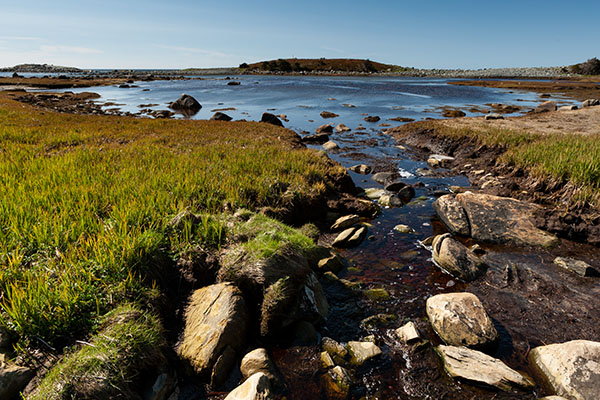
There are several hiking trails connected to the lighthouse properties. Some take you along the shoreline and some through the woods. They are all well-marked and the terrain is not too difficult. My favourite was a short one that went from the lighthouse to Barachois Cove. I sometimes went to the cove early in the morning to photograph the lobster boats working just offshore. Closer to noon, when the sun was high and harsh, I would photograph the surf. Or, I would just lie back in the heather and relax, enjoying the salt breeze and the warmth of the spring sun on my face.
I managed to walk all of the trails at some point, but the one to Barachois Cove was one of only two that I regularly used.
The other trail, so short it's barely noticeable, goes from the Interpretive Center to the shoreline overlooking the harbour and the village. I would go there in the evenings to catch the sun setting behind the town. It was a good way to end the day, and a great way to say: "Good night, Port Bickerton!"
Good Night, Port Bickerton!
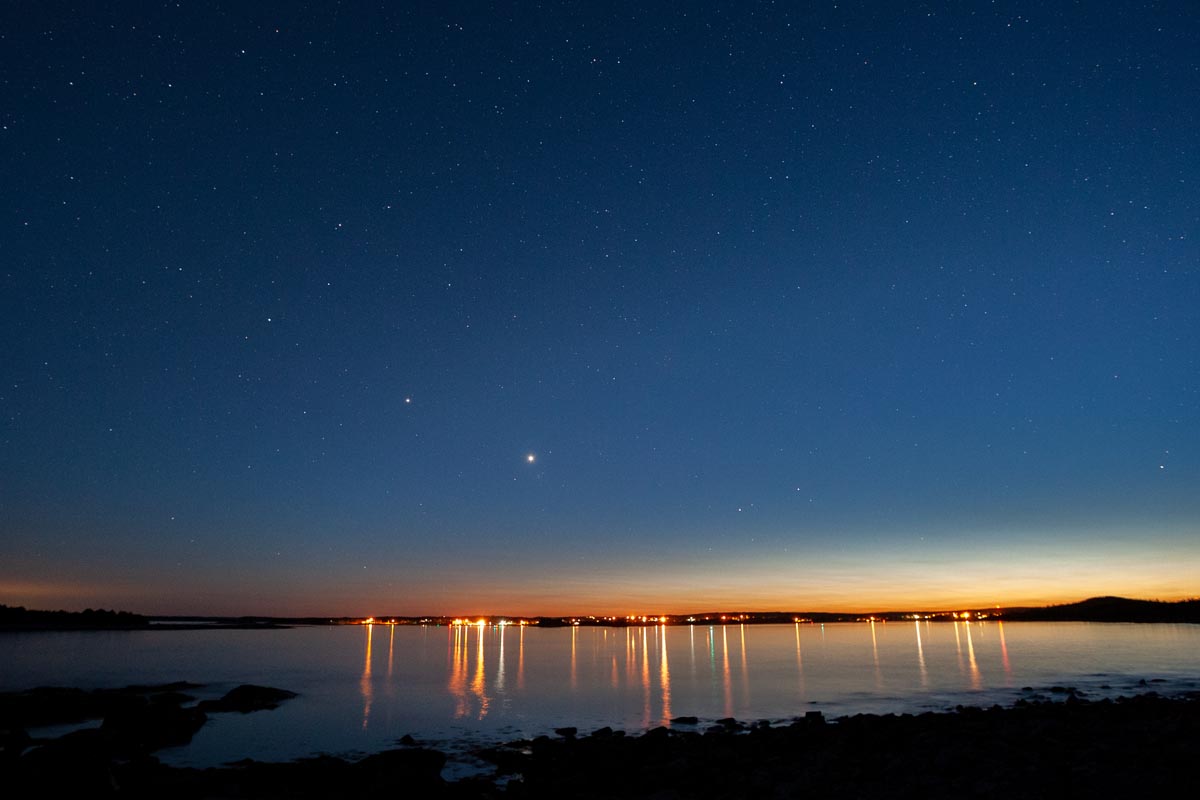
Wilda asked me if I could make regular posts to my Facebook Page (the page has since been deleted) so that the locals could see what I was up to during the residency. I was happy to oblige. I would sometimes post during the day if I had downloaded and edited a few images over lunch, but I usually did so in the evening, after I had settled into the cottage for the night. Because I was posting near bedtime, I usually titled them "Good night, Port Bickerton!" I can't recall exactly which ones I posted, but I'm pretty sure they involved either lobster fishing, the lighthouse, or the village. I might even have posted the one above, taken from that small beach below the Interpretive Centre, looking across Bickerton Harbour towards the village.
Or, I might have posted the photo below, captured during the last night of my stay in Port Bickerton. It was the final sunset of my residency, and was taken from the same spot as the previous image. It was a beautiful sunset, and a great way to say both "good night" and "good bye" to Port Bickerton.

While that photo was one of the last I took, it's not the last one I want to post here. There is a gallery a little further down. I hope you'll take some time to browse through it.



